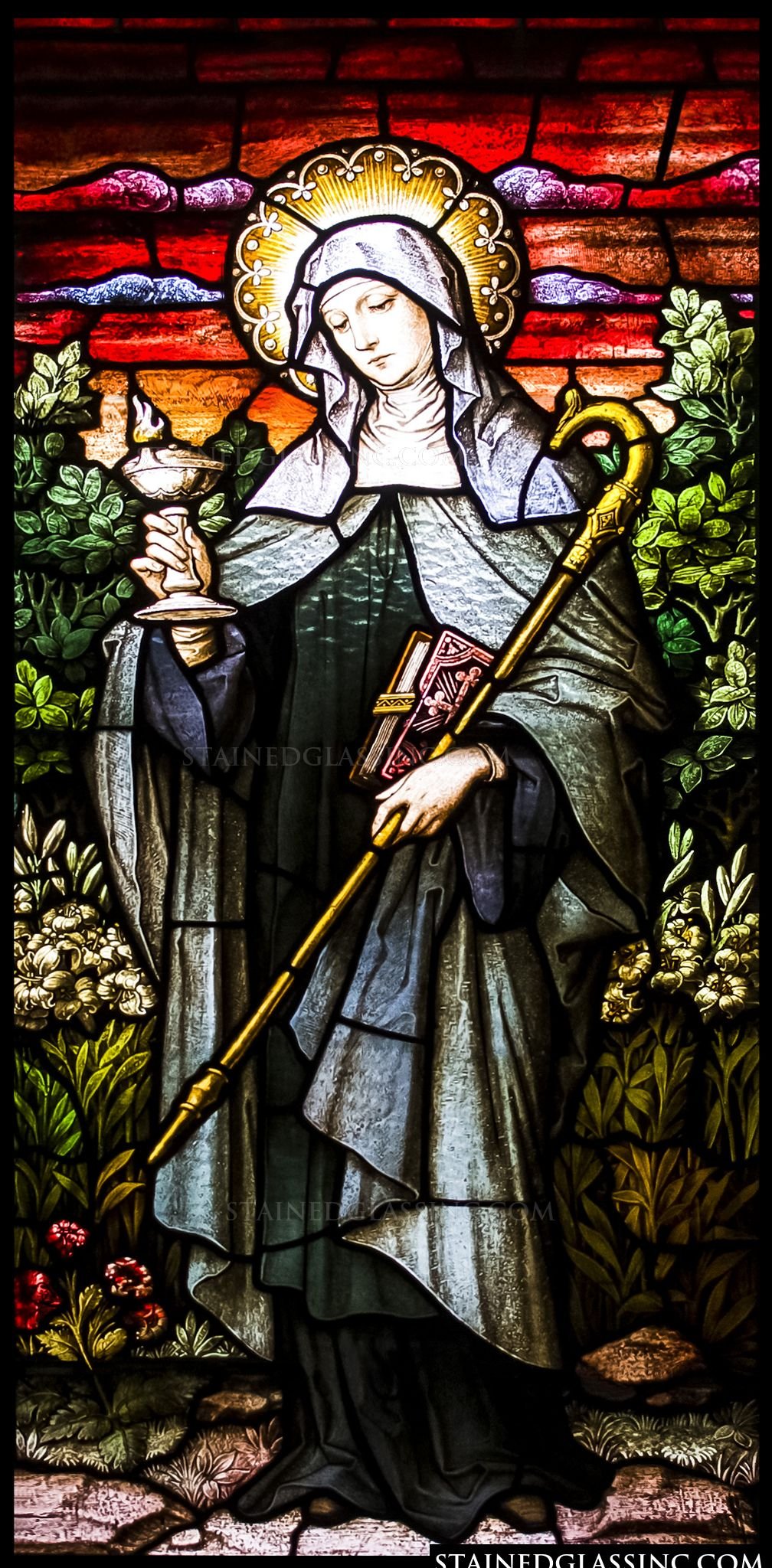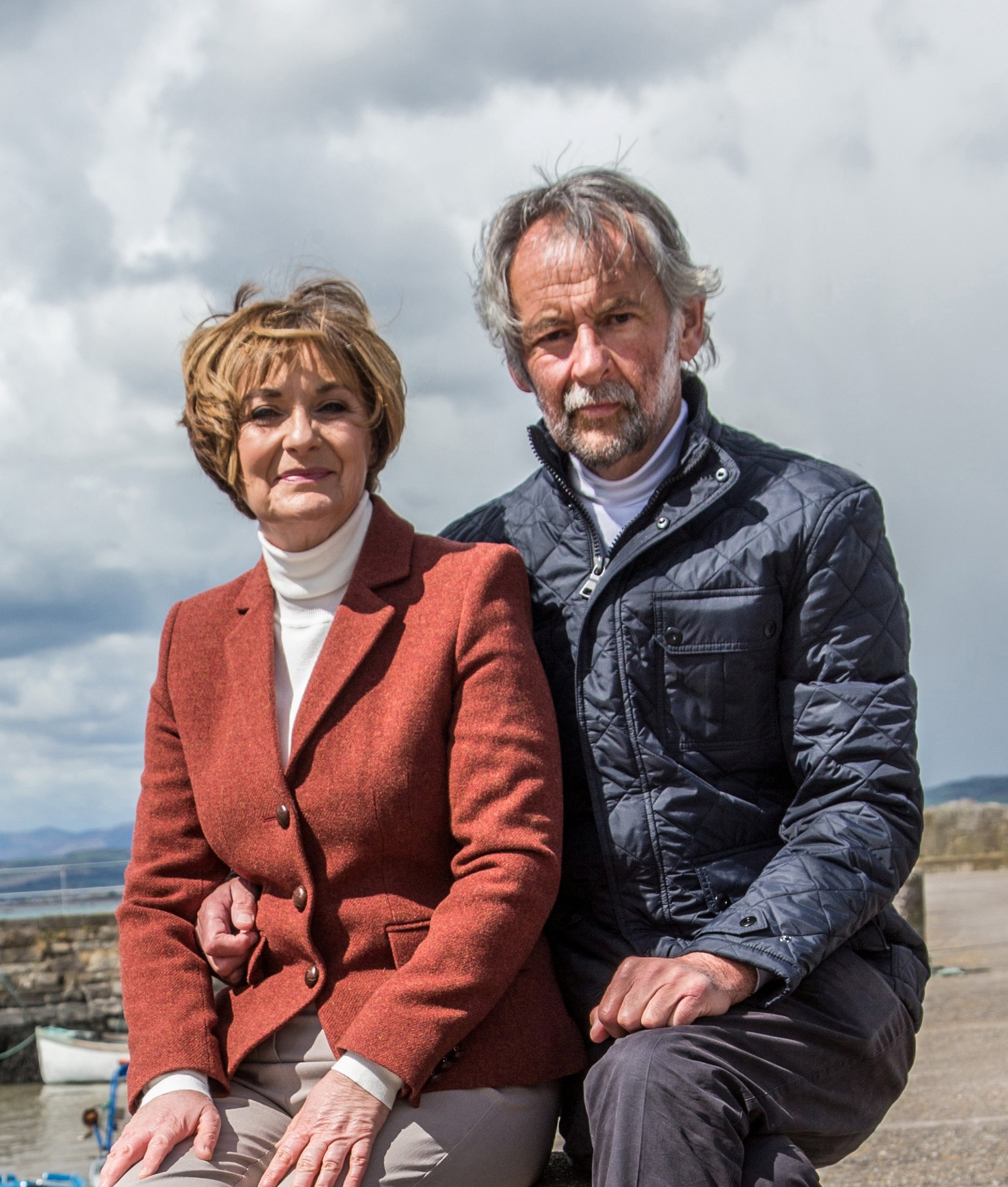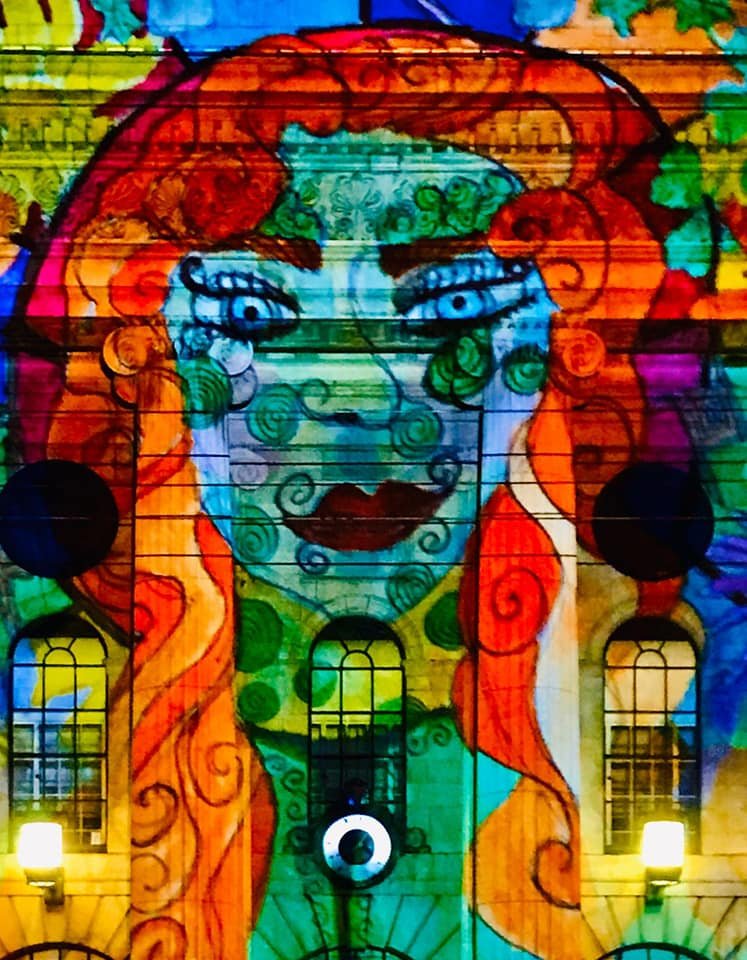St Brigid
Abbess, icon, feminist, miracle worker, goddess, saint - St Brigid was all that and more. Niamh O’Reilly asks, just who was this remarkable woman we remember on February 1 and why is she the perfect icon for these pandemic times.
St Brigid by Non Waters
I have to admit that up until a few years ago when I thought of St Brigid, I associated her with memories of dreary cold weather and rather dull green St Brigid’s crosses. She didn’t strike me as being someone uniquely inspiring or relevant to me in my everyday life. I couldn’t recall learning anything fascinating about her in school, other than reading about her miraculous expanding cloak in some dog-eared textbook, while I stared out the window and daydreamed about much ‘cooler’ things.
How wrong I was. As it turns out, Brigid is the very embodiment of a modern woman living in thoroughly challenging 5th Century times. Her world was far from a one-dimensional, dog-eared textbook and more akin to an episode of Game of Thrones. She lived in a time of druids and chieftains. The fall of the Roman Empire was a recent event, and a burgeoning Christian church was spreading its wings all over Europe. Women had very little status or power and were often reduced to the property of the men in their lives. So how did a young woman born into poverty around 450 AD go on to become one of the most successful and powerful women in the catholic church and later recognised as a saint?
Maybe it was her headstrong character and ambition? Maybe it was her endless compassion? Or maybe it was that quintessential Irish trait of having a fire in her belly that gave her the edge.
RULE BREAKER
Una O’Hagan and her husband Colm Keane are both experts on St Brigid thanks to their recent book, The Book of St Brigid, detailing the extraordinary life of this truly modern Irish woman.
“She broke all the rules,” says Una. One cannot help but be carried away by the genuine enthusiasm she has for St Brigid; a common trait of all who investigate her, as I would find out along the way. “She knew no boundaries; she knew her own mind. Brigid was ambitious for herself and what she wanted to achieve. At the age of 16 she broke all the rules of the time to go off to become a nun, even becoming a bishop at the age of 21 and setting up this amazing monastery in Kildare, the likes of which was not seen for another 900 years in Europe.”
In fact, as the abbess of that monastery in Kildare and other sites around the country, Brigid gave around 13,000 nuns the opportunity to be educated through their work, giving them much more freedom than would have usually been afforded to them at the time. But what’s most striking about Brigid and the monastery in Kildare, is that men and women worked side by side. There was a real sense of equality between those who lived and worked together. Something which could be used as a blueprint for positive changes in the modern catholic church.
There’s no doubting Brigid’s CV is impressive, but add to the list her endless compassion and help for the poor, sick and vulnerable, as well as her countless miracles, such as restoring sight, healing and even changing water into beer, is there anything she couldn't do?
CONTROVERSY
For some it seems there are a few bones of contention. Namely that Brigid is recorded as being Ireland’s first abortionist and a lesbian, two facts that often seem at odds with the more traditional aspects of being a Saint. However, these facts allowed Brigid to re-emerge as a positive figure during both the Marriage Equality and Repeal the 8th referendums.
“She was the first recorded abortionist in Ireland, she also shared her bed with another woman; so the idea that these facts are reported in the annals (Cogitosus) are very important, as it presents potentially a much more progressive Christianity than what we’re currently experiencing in this era.” Melanie Lynch, CEO and creative director of Herstory shares the undeniable love and enthusiasm for Brigid that seems to go hand in hand with the saint. Maybe that’s Brigid’s real power, but we’ll get to that shortly.
As the foremost voice in the campaign to have Brigid’s day become a public holiday, Melanie is keen to have Brigid recognised for the multi-dimensional powerhouse she was. “It all started one rainy Sunday when I was meditating, if the whole world lights up green on St Patrick’s Day, well what about the women? The idea of illuminating in honour of women made sense, because if you think about it, women have been lost in the shadows and forgotten throughout history and light is a powerful recognition of the spotlight we need to put on Brigid, and I suppose every woman’s story.”
To some she’s a saint, to others she’s a Celtic goddess. Any discussion about the figure cannot ignore this duality that lies at her core. “She’s both,” says Melanie. “I adore the saint and the goddess, the saint because she’s the best of Christianity. She’s the real deal.”
Like many saints, Brigid’s roots can be traced back to stories of Celtic goddesses and pagan spiritualism. February 1 is also the ancient festival of Imbolc and traditionally saw the celebration of the goddess Brigid, the end of winter and the return of brighter days. “She’s the goddess and saint of healing and looking at the character, she had this unquenchable spirit. She was very formidable - the essence of what it means to be an Irish woman. We are indomitable and cultures all around the world say, ‘you don’t mess with an Irish woman’. We have that fire in us,” Melanie adds.
Someone whose name is synonymous with strong women and modern feminism in Ireland, is actress, writer and podcast host Tara Flynn. She has spent quite some time looking into Brigid who she previously saw as “a kind of a dour figure in a veil; a spiritual sidekick to St Patrick”. However, after a bit of digging, Tara soon realised, like so many who explore Brigid, that there is much more to her than meets the eye.
“I started researching her as part of my one-woman show ‘Not a Funny Word’ and I realised, she's not some goody-goody saint: she's a goddess. The goddess of poetry and light. Of beer. And let's not forget that she brings spring with Imbolc. She's very impressive and deserves a parade in acknowledgement, at the very least”
PUBLIC HOLIDAY
It's a good point and one that has finally gained traction thanks in large part to the work of Melanie and Herstory who have spearheaded the campaign to have a public holiday to recognise Brigid.
But what about St Patrick? His shadow looms large on any discussion around Brigid and the plain fact that she too is one of our country’s patron saints. When one looks at her long list of ground-breaking accomplishments it’s hard to fathom how she’s not been front and centre in the patron saint stakes.
Was it just good timing on Patrick’s part? Or was it because Brigid was female? Predictably, the answer has many aspects to it, as is indicative of anything to do with Brigid.
“(It’s the) Patrick-archy, pure and simple” says Tara Flynn. “It’s time for some balance, like they say on the radio shows.” It’s hard to disagree.
Despite all her incredible achievements, and the less oppressive nature of Christianity at the time in which she lived, in the centuries that followed, it appears that Patrick won out.
“Ireland was patriarchal as a society” explains Melanie. “It didn’t make sense to the decision makers of the time and their socio-political leanings to give the women of Ireland a powerful, free-thinking role model. That was just not part of the agenda.” Politics it seems was the real elephant in the room perhaps.
“Brigid wasn’t helped by the fact that she was a woman,” explains Una O'Hagan. “But it goes deeper than that. She was a victim of politics.
Patrick was associated with Armagh and Brigid was associated with Dublin. ere was a political row going on for supremacy within the church in Ireland that went on for 300 years, until both sides appealed to Rome. Armagh (and St Patrick) won the favour of Rome.”
However, the tide is finally changing taking us into a more inclusive era. Throw a global pandemic into the mix and it seems Brigid’s time has come, and we need her strength now more than ever.
Her word is spreading, and it seems that we will finally get an official public holiday to mark Brigid in Ireland in 2023. Still despite the wait, this year there is more buzz than ever, as if that cloak she so famously spread over the Curragh, is beginning to make its way into every corner of the globe.
Last year saw an expanded programme of events take place internationally in over 40 locations, over several days.
This year the Department of Foreign Affairs has confirmed that “Irish embassies and consulates across the globe will host a range of events to celebrate the pioneering and creative role of Irish women in various aspects of life. The celebration of Brigid’s Day was chosen as a new and innovative way to showcase the work of trailblazing, inspirational Irish women, while also highlighting Ireland’s commitment to diversity and gender equality.”
So what can we expect for Brigid’s Day in the future and does it have the potential to be as big as St Patrick’s Day? Or should it be something different altogether?
“There’s an opportunity to create something really authentic and totally inclusive,” chimes Melanie. “I don’t think it needs to be a religious day, maybe a spiritual day. Ultimately Brigid is for everyone and for these times.”
It’s a viewpoint echoed by Una O’Hagan, who sees Brigid as very much the real woman who lived, rather than the Celtic goddess. “I don’t know if you could have a spiritual bank holiday” she muses, “but there’s something in that and it speaks to people nowadays more than ever, especially given what we’ve all been through.” Brigid was a healer after all, and it seems as though she is the figure we all need now.
“She’s for everyone and for these times, I think we suffer from a loss of spirituality especially in challenging times like today. Whether you're leaning toward the Celtic tradition or the spiritual tradition, she’s all of those things and none as well, and that’s the gift of Brigid.”
GODDESS AND SAINT
It’s a feeling echoed by everyone who has a fondness for her, no matter what their point of view. Tara Flynn, who would not describe herself as 'religious', was more interested in the goddess and spiritual side of Brigid. “I wasn't that drawn to the saintly aspect (though I hear Bridget of Kildare was awesome in her own way). Once I realised she was a goddess and fundamental to our history and culture, to our relationship to the seasons, to the essence of ourselves, I've been fascinated with her.”
And that’s Brigid in a nutshell. She’s many things to many people. To some she’s a saint, to others she’s a goddess of spring. To some she’s the first Irish feminist and poster woman for equality. In some ways she’s indefinable. She cannot be pigeon-holed or easily labelled. As Melanie Lynch puts it, “she won’t be put in a little box; you can’t really tame her.”
While there might be differing opinions on Brigid, everyone agrees that she was not a one-dimensional character. There is consensus that she was a rule breaker, a feminist, a strong leader, a person full of compassion, an extraordinary character and trailblazer, who ignites a fierce interest and passion in all those who uncover her story.
This, I think, is Brigid’s true power and lasting legacy; her multi-dimensional qualities and her unparalleled ability to connect people from differing viewpoints all over the world. As Tara Flynn says: “Brigid represented all society, all classes” and whether you want to call her St Brigid or simply Brigid, there’s no denying her extraordinary accomplishments.
Astonishingly, 2023 will be the 1,500th anniversary of her death. Una O’Hagan rightly points out, “1,500 years later, Brigid still speaks to all of us in many different ways”
Now that is worth celebrating.










